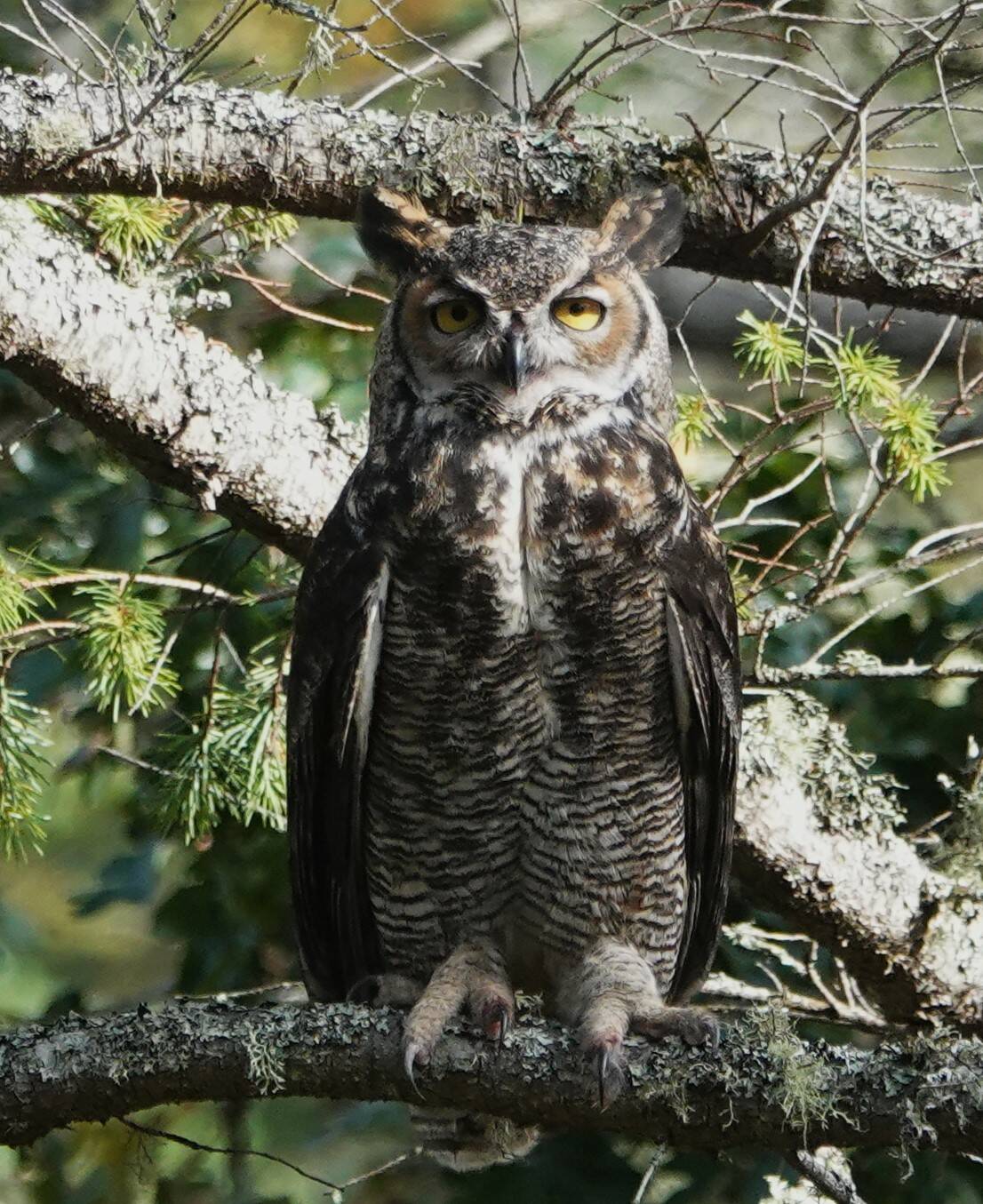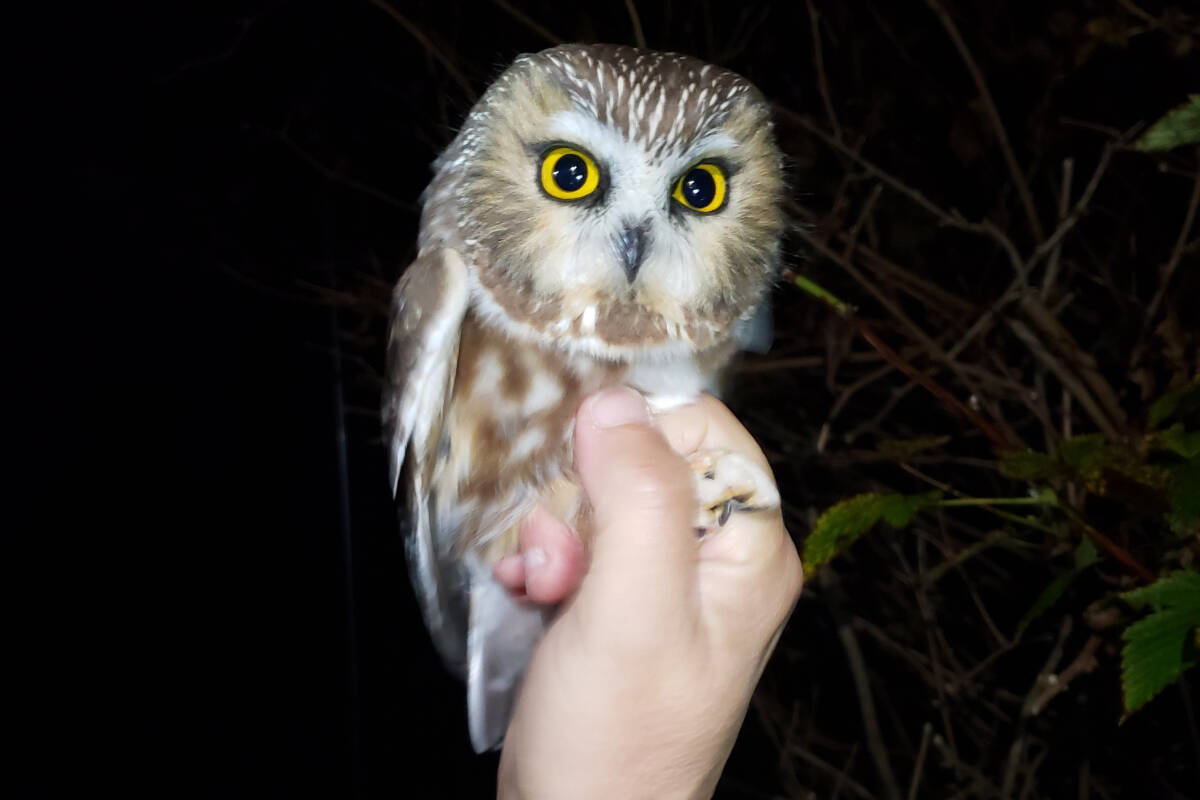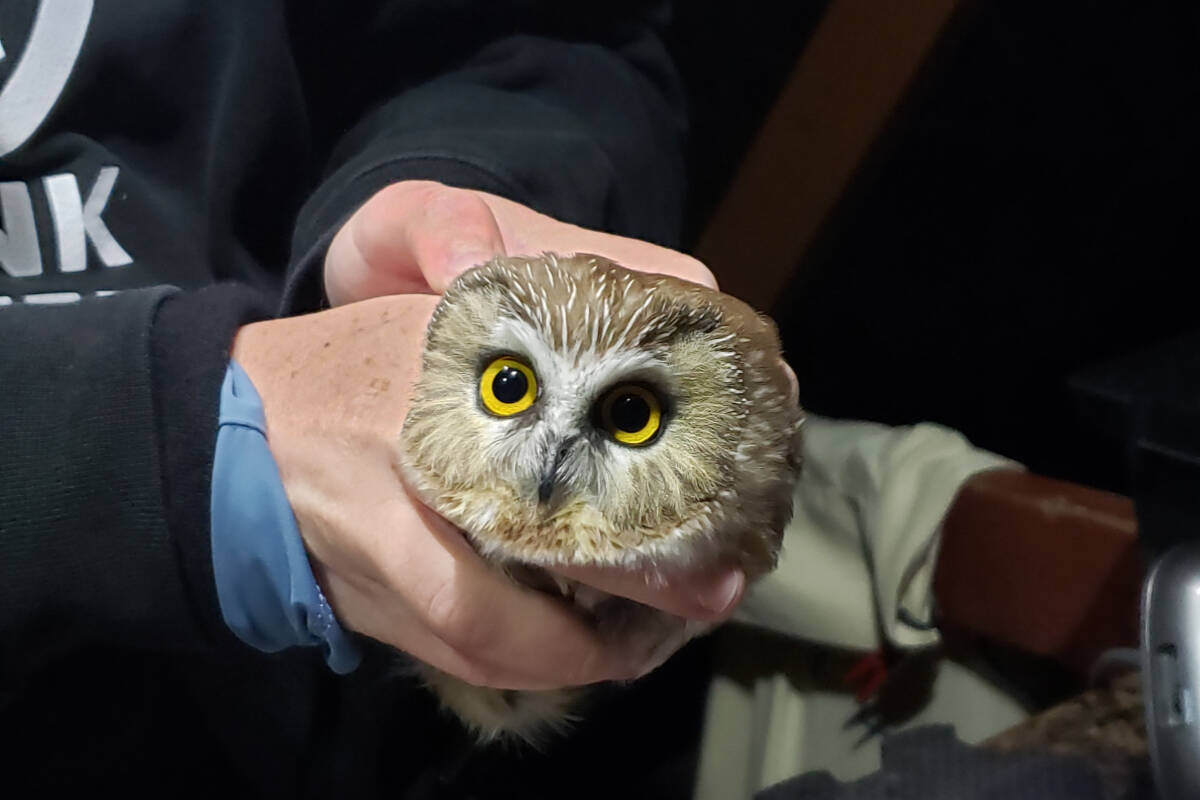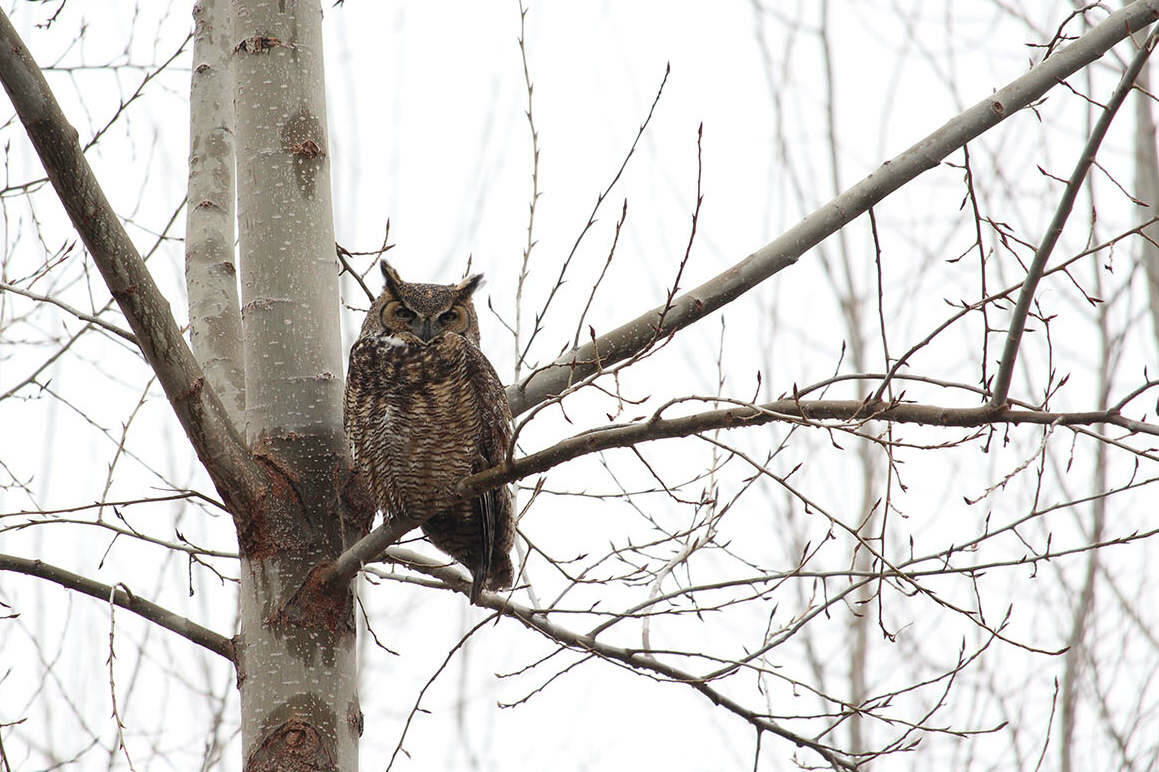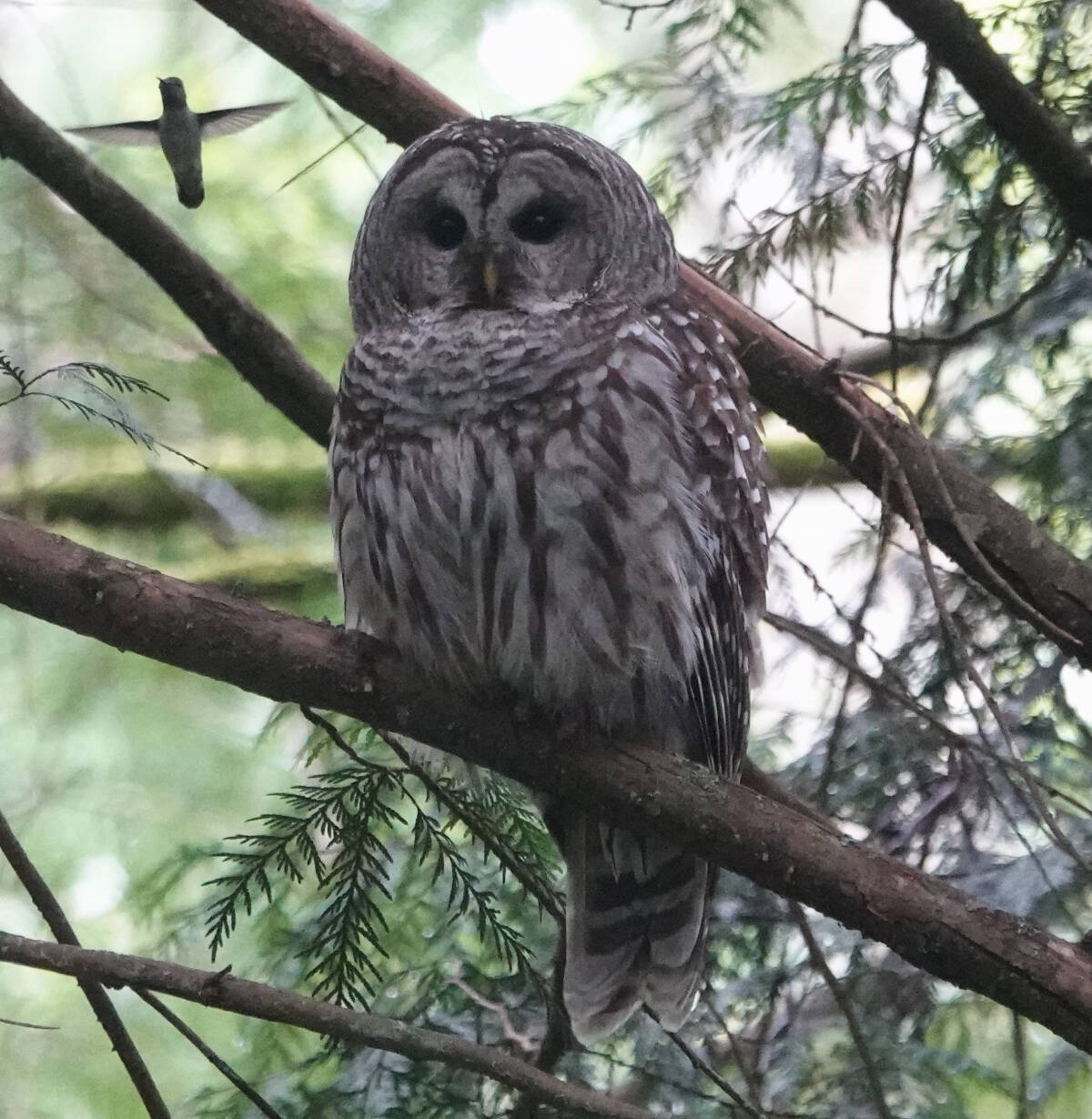Owl spotting is on the rise this year in Greater Victoria, judging by the online posts, word of mouth and backed by numbers recorded through the Rocky Point Bird Observatory (RPBO).
The Victoria-based registered charity focuses on influencing ecological management practices and conservation of migratory birds in western North America with monitoring, scientific research and public education.
“The barred owls are the ones people are talking about a lot now,” said board member Ann Nightingale. “We get a lot of stories every year, it does seem to be a higher number this year than usual.”
RPBO is currently seeking funding to do a tracking project on barred owls to answer some of the questions about numbers, territorial range and other behaviours. In the absence of that kind of official data, the appearance of abundance could be attributed to a combination of more owls in general in higher visibility areas and the social media effect.
READ ALSO: Barred owls dominate Greater Victoria owl-scape
Rocky Point Bird Observatory does band and collect data on northern saw-whet owls – and has since 2002. This year saw a jump in that population – the second highest total ever with more than 1,400 in six weeks, Nightingale said.
“We have noticed a strong correlation between a strong northern saw-whet owl season and a higher number of barred owls, and this year was the same,” she told Black Press Media.
Few are lucky enough to see the northern saw-whet because they’re small and rarely come out in the day.
Those barred owls, however, are large, easy to see even without binoculars and they will hang out anywhere – from a forested park area outside of town to the Central Branch of the Greater Victoria Public Library – day or night.
“They’re basically in every small park and neighbourhood in Victoria. We don’t have a real good estimate on how many there are,” Nightingale said. “They’ll hunt day and night, they’re very vocal (and) everyone knows the ‘who cooks for you’ call.”
With that kind of visibility, once one is posted on social media, others will spot it or even seek it out.
Which is fine, as long as folks heed any warnings also issued.
“They aren’t random. These birds are in a particular area,” Nightingale said. “If there’s an owl at the Saanich Peninsula Hospital that roosts in a tree and has been known to come down and hit people in the head, I would avoid it.”
READ ALSO: Sidney warns walkers to wear a hat and watch for aggressive owls
This fall, public reports of an aggressive owl prompted Sidney to warn Reay Creek Park trail users to be wary and Nightingale has a few tips for that too.
“Tuck in ponytails and hide pompoms,” she said.
Those cute tassels atop toques and the bobbing ponytail of a jogger look an awful lot like a squirrel tail, particularly younger learning owls.
Wear a hat in a known owl corridor and put something that looks like eyes on the back of the hat or hood. It mimics something that happens in nature, for example, both the northern Pygmy and northern saw-whet owls can have markings that look like eyes.
READ ALSO: Barred owl makes itself at home in Oak Bay residence
“The reason this might help is because most predators like to come in undetected,” Nightingale said. “If the owl thinks you’re looking at it because you have googly eyes on the back of your hat it’s going to be less likely to come at you.”
While there are tales of large owls carrying off the occasional pets, a barred owl – generally weighing in at fewer than two pounds – can take a small rabbit or a squirrel, and the larger great-horned owl could take a big rabbit or a small cat, Nightingale said.
However, if an owl misjudges size or capabilities it could injure or kill a pet.
“I have heard people say their cat has been picked up by a great horned owl, and it is possible, but it won’t have gotten very far with it. But it could absolutely hurt it and potentially even kill it,” she said. “They’re big birds carrying sharp knives.”
Do you have a great owl photo or video to share? Send it to us by emailing christine.vanreeuwyk@blackpress.ca.
READ ALSO: Owls in Greater Victoria find protection with home-built boxes
